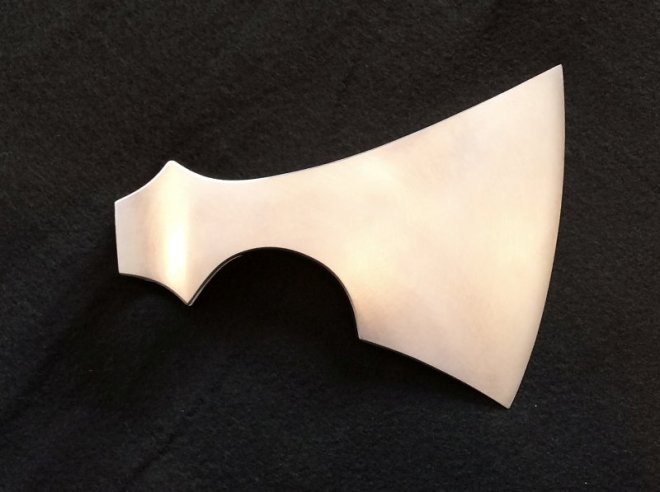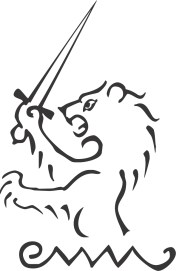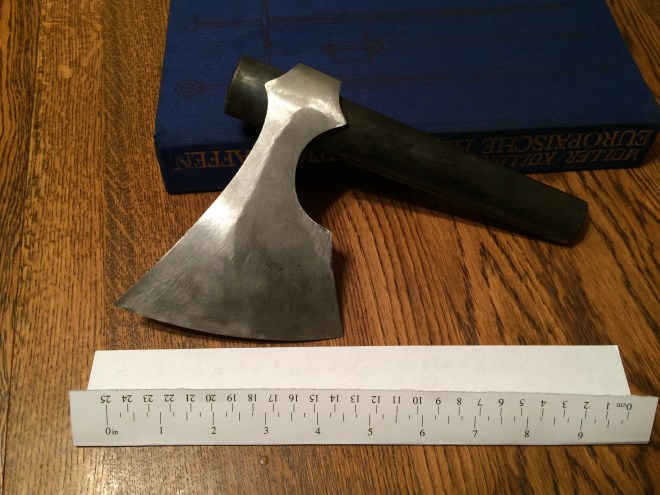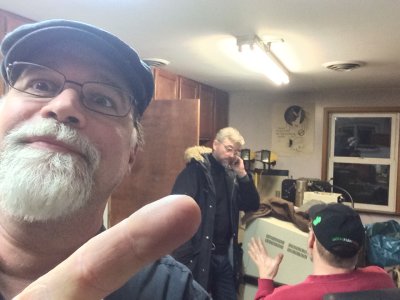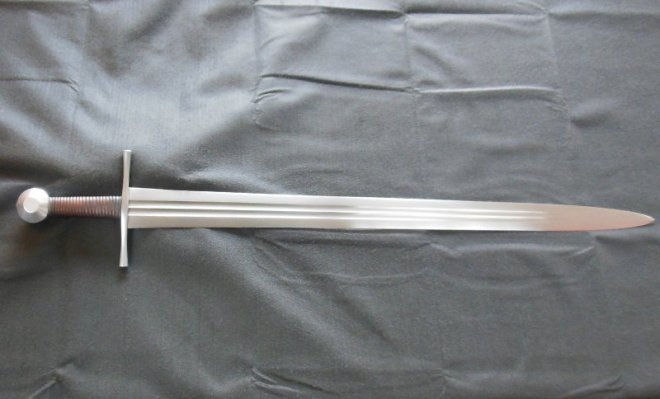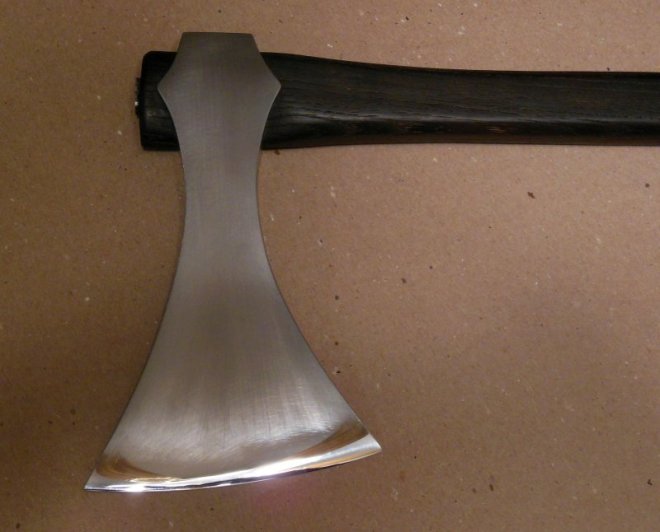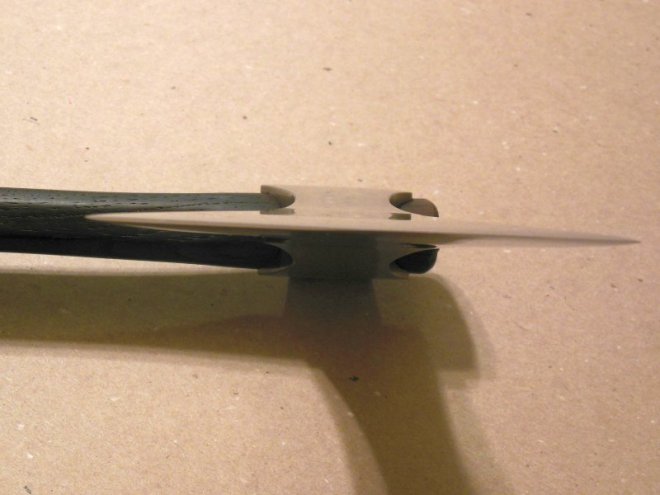This summer I finished a new 25ton Hydraulic Forging Press. Below is a photo essay of how I constructed it.
I jokingly call this a Hydraulic Forging Press Kit, but this is the raw material I started with. 1″ plate and steel tubes for the structure. 1/2″ plate for the base.
My press is based on the hydraulic forging press made by Uncle Al of Riverside Machine. I owned one of his presses when I lived in Wisconsin, and I really like the moving ram frame design. It places the hydraulic cylinder at the bottom but then combines a traditional hydraulic press forging method. Many of the presses that have the cylinder on the bottom accomplish forging by moving the bottom die, but this design moves the top die up and down by utilizing a ram frame that slides in a frame guide which is supported on structural steel. I drilled and tapped holes for grease fittings to make it easy to lubricate the ram frame and frame guide.
The left picture shows the dry fit up of the ram frame components. The large plate at the bottom attaches to the bottom of the cylinder while the top hole is where the cylinder will be hung from when assembled. I used 7018 Low Hydrogen welding rod with multiple passes to join the 1″ plate to the frame arms (Right Picture).
Once the bottom of the ram frame was welded, I test fitted the hydraulic cylinder to make sure everything lined up. It was important that everything was mounted right on center-line. I then welded the two 1″ plates that would form the top die holder and the top of the ram frame (Right Picture).
Once the ram frame was welded, I installed the hydraulic cylinder by connecting it to the frame guide and the ram frame then suspended it with rigging to get ready for it to be mounted to the base plate and support tubes (Left Picture). I then went to work on making the base plate. I cut it from a sheet of 1/2″ steel and welded metal casters that could support 1200 pounds to the bottom of the plate. This would allow me to move the press and power pack around my shop for convenience (Right Picture).
I laid out the exact position of the support tubes (4″ X 6″ X 1/4″ structural tubes) on the base plate. I utilized multiple methods to ensure the tubes stayed plumb during welding. This was a critical phase in construction since the tolerance between the tubes was very tight and the tubes needed to be square to the base to ensure the press would be plumb (Left Picture). I then welded finger bars onto the support tubes at the exact elevation that I needed for the ram frame and frame guide to sit. I then lowered the guide and frame onto the finger bars then checked to make sure it was all square and plumb to the base. Once I was satisfied, I welded the frame guide to the support tubes. I also added caps to the top of the support tubes. I made the one on the right wider to provide for the control valve. I drilled and tapped holes to make the control valve attachment easier (Right Picture.
The left picture shows the control valve base and the attachment point for the motor start box. I then went to work on the motor and pump alignment and mounting. I shimmed the pump mount to the correct elevation with the motor shaft, and then installed the Lovejoy couplers (Right Picture).
I then mounted the motor and pump onto the base. Followed by the fluid reservoir, motor start box, and control valve. The hydraulic hoses were then fitted.
Pictured is the hydraulic hoses as well as the pump, motor and reservoir arrangement.
I also installed and welded the lower die holder. Basically, the die holder is two small angles that would allow for the dies to be slipped in and out as needed. Protective hose covers were also installed on the hydraulic hoses. These protect against accidental contact and to protect the user in the event of a hydraulic leak.
I installed a support bar to limit the lateral movement of the hydraulic cylinder. It was made of 1018 mild steel which provided for a small amount of flex while at the same time limiting the movement of the cylinder. This was not absolutely necessary since the ram frame moved up and down quite smoothly and in line with the guide, but I wanted to make sure there was extra support to prevent any twisting and warping of the frame (Left Picture). I then installed a scale shield. Below the scale shield (not pictured) I put a cover that protects the whole front of the press below the scale shield. Also, pictured are my first set of forging dies. It is acceptable to use mild steel for dies, but I opted to use 4140 for added durability.
Prior to putting the press to use, I filled the reservoir and set the safety relief valve on the control valve at 2,500 psi. It is critical that you have a guage as a part of your system. This allows you to precisely set the control valve. Too much pressure will lead to damage to your press and even injury to the user. According to Build Your Own Hydraulic Forging Press by James L. Batson, a 5″ cylinder operating at 2,500 psi will generate 24.5 tons of hydraulic force. The power pack includes a 16 gpm two-stage pump and a 7.0 HP motor running at 3450 rpm. According to his book, this creates a ram speed of 3″ a second. I find it is a little slower than this but not by much. I really have to watch how much I move the control valve lever. It is quite easy to over forge a piece of hot steel.
I’ve been able to create a variety of dies that serve different purposes. Everything from drawing dies to beveling dies. I even made a lateral drawing die that is on an angle for drawing axe blades out sideways. This is quite helpful when make Type M axes. I have a large set of flat dies I use for pattern weld billets. The bottom die has holes drilled into it so I can insert a set of thickness stops. Since even 25 tons is not capable of crushing cold steel, these stops allows me to precisely forge a hot billet to a desired thickness. It comes in handy when I am making twist pattern and I want to make sure the billet it exactly drawn out to my target thickness.
Overall, I am quite happy with this press. I was happy that I went with the bigger motor. The press has very little lag or recovery time. I pretty much have a massive amount of pressure available whenever I need it. The ideas for different dies are limitless, so I can reduce my workload no matter what I am trying to forge. If you have any question, I’ll do my best to help. Just send me an email at ericmycue374@comcast.net.
